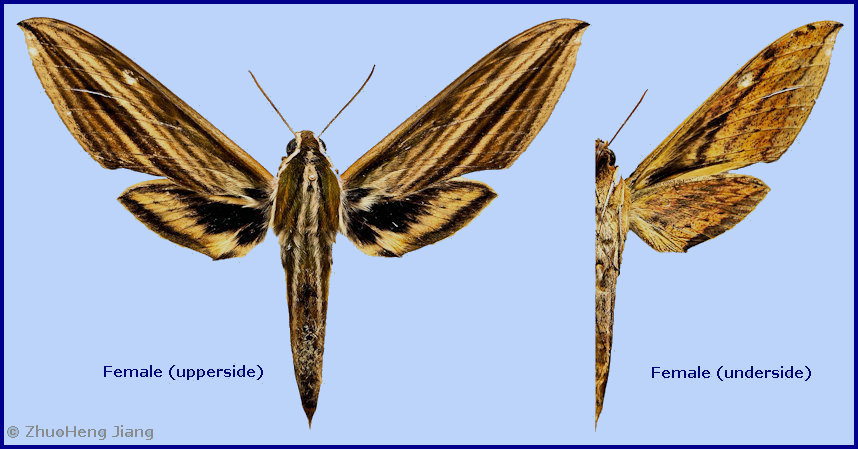
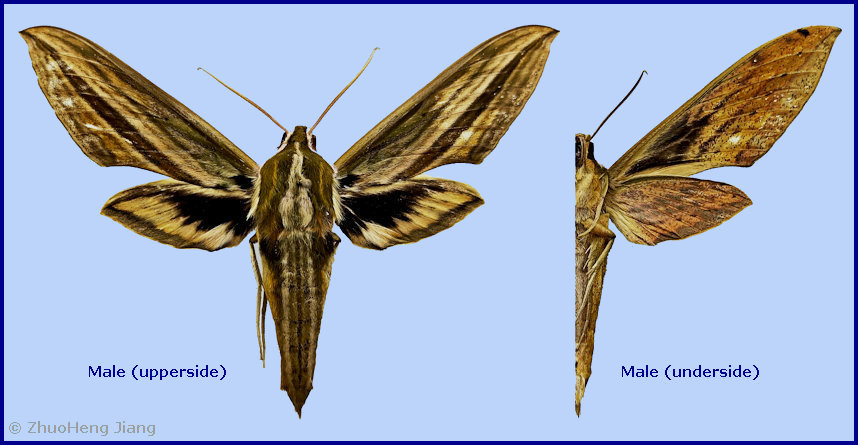
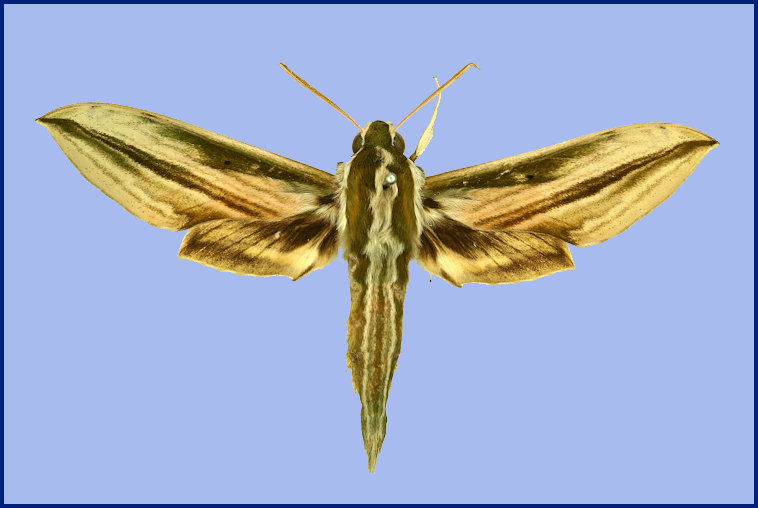
Cechetra scotti (Rothschild, 1920), Annals and Magazine of Natural History 5: 481. Type locality: [India, Uttarakhand,] Mussoorie.
Synonym. Cechenena lineosa subsp. scotti Rothschild, 1920.
Synonym. Cechenena scotti Rothschild, 1920.
Synonym. Cechenena pundjabensis Gehlen, 1931.
Note. Synonymized with Cechenena lineosa as a subspecies by Gehlen, 1931, Ent. Z. 45: 121. Reinstated as a species by Dierl, 1970, Khumbu Himal Ergebn. Forsch-Unternehmens Nepal Himalaya 3: 335. Treated as a form of Cechenena lineosa by d'Abrera, [1987], Sphingidae Mundi: 205. Reinstated as a species by Haruta, 1993, Tinea 13 (suppl. 3): 147. Treated as a subspecies of Cechenena lineosa by Bridges, 1993, Cat. Fam. Gen. Spec. Sphingidae of the World: VIII.4. Reinstated as a species by Kitching & Cadiou, 2000, Hawkmoths of the World: 40. Overlooked by Zolotuhin & Ryabov, 2012, Hawkmoths of Vietnam: 206 and not formally transferred to Cechetra when that genus was erected. Transferred to Cechetra by Kitching & Rougerie et al., 2018, Biodivers. Data J. 6: e22236, and by Ivshin, Krutov & Romanov, Zootaxa 4450(1): 1 (Sphingidae Taxonomic Inventory, 2021).
Wingspan: 74--108mm. Very similar to paler and more contrastingly patterned specimens of Cechetra lineosa but immediately distinguishable by the pink dorsal scaling on the proximal part of the antenna and, in most individuals, a deep olive-green band along the costa. This green flush may run through the anterior half of the discal cell; however, in some individuals the green is replaced by brown. This banded area contrasts strongly with the pale ground colour of the remainder of the wing, which is characteristically flushed pink basally in most. Despite these pattern differences, Cechetra scotti may yet prove to be only a colour form of Cechetra lineosa (Sphingidae Taxonomic Inventory, 2021).
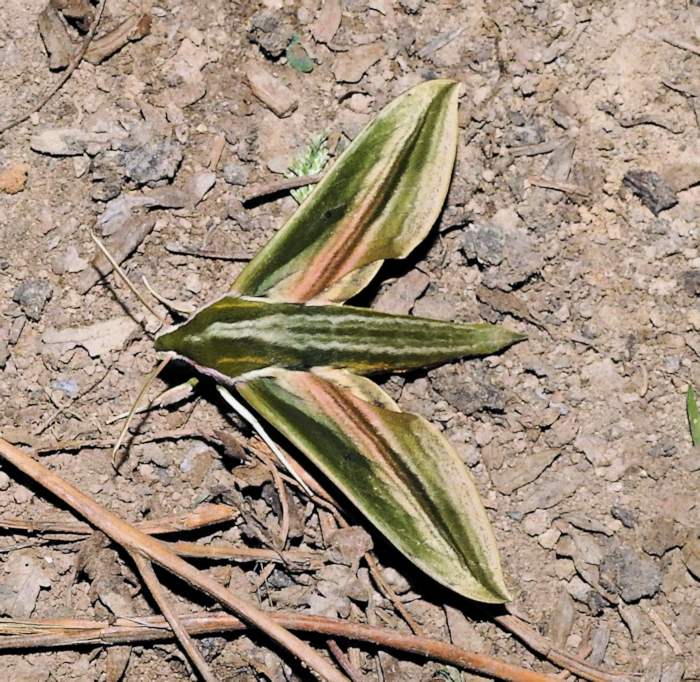
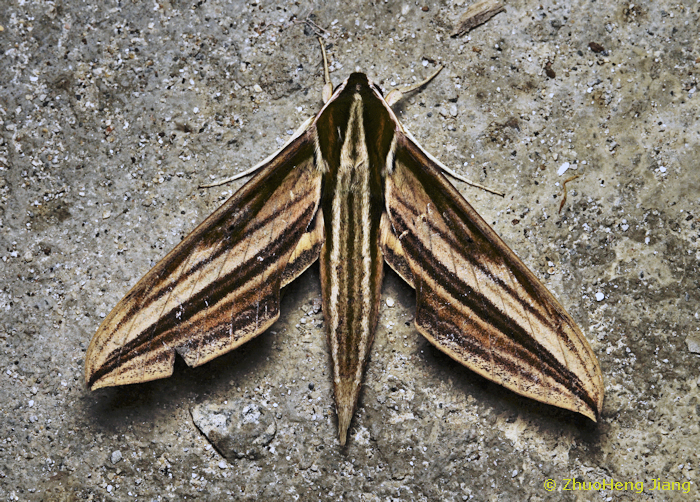
At 1050-2400m altitude.
China: 25.iv (nr. Yuxi, Yunnan); 23.vi (Gongshan Derung and Nu Autonomous County, Yunnan); 3-7.vii (Medog, Lhunze & Zhangmu, Xizang/Tibet); 4.viii (Pianma, Yunnan).
OVUM: Undescribed.
LARVA: Very similar to that of Cechetra lineosa, but smaller (Bell & Scott, 1937).
PUPA: Very similar to that of Cechetra lineosa, but smaller (Bell & Scott, 1937).
Larval hostplants. Vitaceae.
Unknown.
China: Yunnan (Molangshan, nr. Yuxi, 1050m; Pianma, nr. Lushui; Gongshan Derung and Nu Autonomous County; Yingjiang County); Xizang/Tibet (Lhunze; Zhangmu, Nyalam County; Medog, Nyingchi/Linzhi area; Zhêntang/Chentang).
Northern Pakistan (Azad Kashmir), northern India (Himachal Pradesh, Uttarakhand, Sikkim, Arunachal Pradesh, Nagaland), Nepal, Bhutan (Irungbam & Irungbam, 2019), northern Laos, northern Vietnam, southern Yunnan (China) and just into the tropical Tibetan border towns.
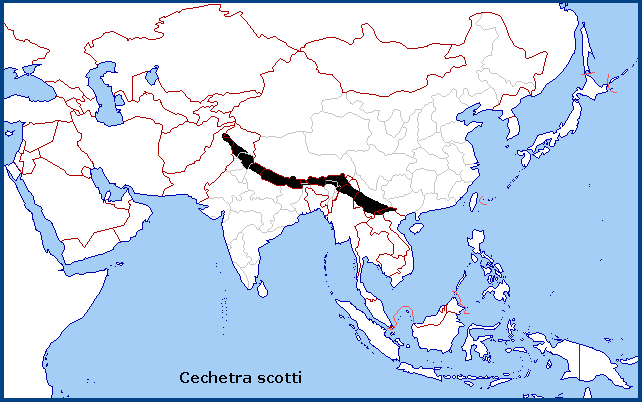
 Return to Sphingidae of the Eastern Palaearctic species list
Return to Sphingidae of the Eastern Palaearctic species list